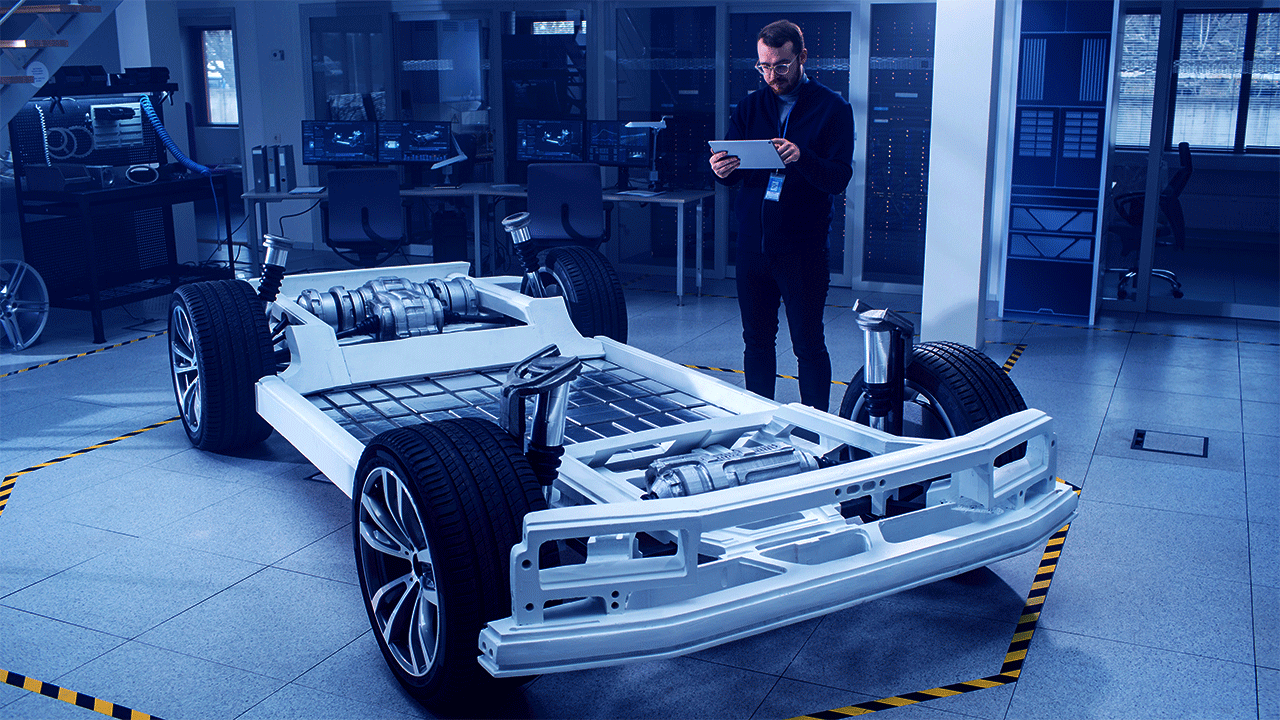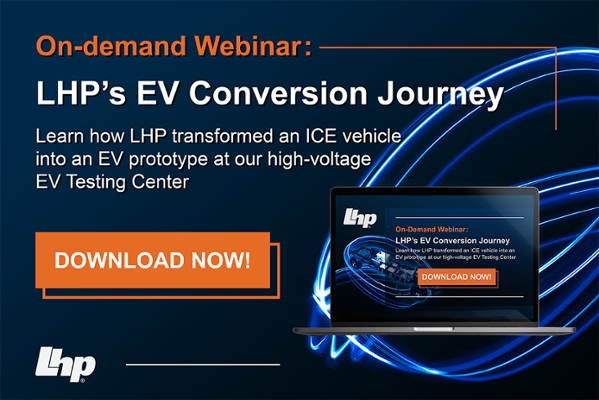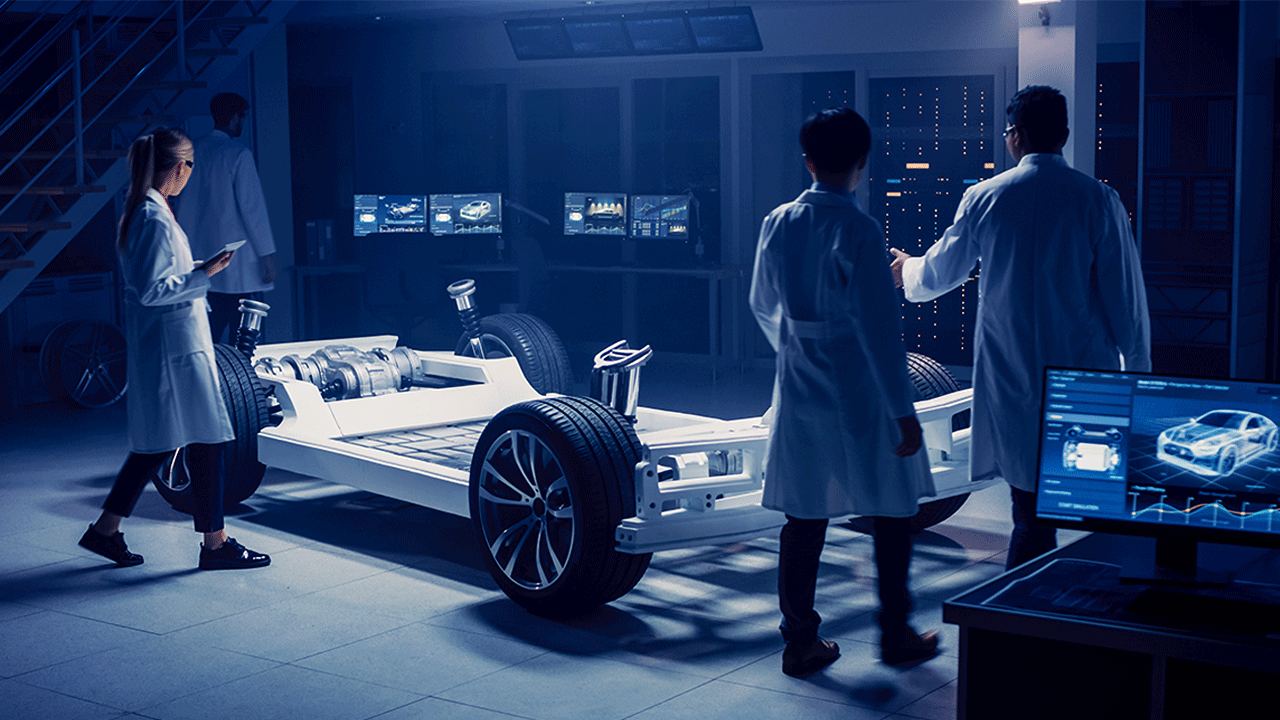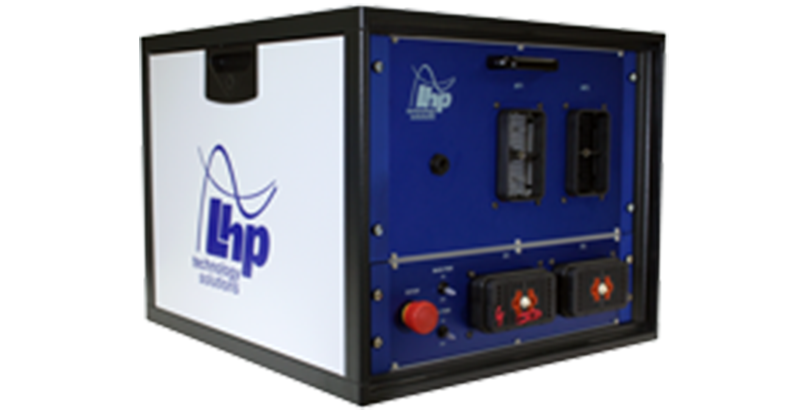Electric Vehicle Considerations for Functional Safety Verification and Validation Testing
Electric Vehicle Considerations for Functional Safety Verification and Validation Testing The functional safety standard for the automotive industry,...
Unlock Engineering Insights: Explore Our Technical Articles Now!
Discover a Wealth of Knowledge – Browse Our eBooks, Whitepapers, and More!
Stay Informed and Inspired – View Our Webinars and Videos Today!
Exploring the future of software-defined vehicles through expert insights.

The rapidly increasing integration of embedded electronic control units (ECUs) in nearly every onboard system of modern vehicles requires intensive testing to ensure their safe and precise operation. Electric vehicles (EVs), especially, require more testing than their internal combustion (IC) counterparts, if only due to the generally higher number of ECUs typically required for electric and hybrid vehicles’ powerplant management. We must observe, monitor, and tune the operation of these embedded mechatronic devices to the exacting requirements of Tier 1 suppliers, original equipment manufacturers (OEMs), and international safety and performance standards.
LHP test engineers employ many types of electric vehicle testing equipment and tools to test the internal components and systems of EVs at various levels of granularity, from the component level, all the way up to the full vehicle. These tools of the trade are used to assess a customer’s device or system for performance to the requirements of a standard or internal engineering needs and conditions for EV components and systems, from component test benches to automated system-level setups.
An EV Test Bench is an assembled configuration of test equipment that has been selected and configured for conducting predefined tests on specific components and systems. It is used by engineers, in a test lab setting, to analyze the performance of a vehicle, and especially the behavior characteristics of its motor. Each facet of the motor’s behavior is tied to specific test hardware included in the test bench. A given test bench may have some or all these component instruments.
For an EV, the assessed performance might include voltage and current draw, measured via a voltmeter and ammeter. Noise, vibration, and harshness (often considered together and abbreviated NVH) can also be measured with a sound meter and vibration analyzer. Other rotational speed and power-related behaviors may need to be tested, whether in a loaded condition or a no-load condition, measured with a tachometer or torque sensor. This is done in conjunction with a loading device such as a motor brake or possibly a dynamometer to provide an adequate load to the motor.
The EV test center engineers perform custom setups of our test apparatus on an as-needed basis for each specific customer’s device or test requirement. This will typically involve reconfiguring some segment of the apparatus, as well as acquiring or fabricating connectors and apparatus components. Having in-house the knowledge and ability to customize equipment to a one-off configuration for the customer’s device, requirements, and focus, adds value to LHP’s capacity as a test center.
For high-voltage applications, LHP has an onsite dedicated bench apparatus that is used for testing high-voltage onboard charging systems, as well as the specially trained and certified staff that are properly equipped for safely working with high-voltage equipment.
LHP’s EV test center uses Hardware in the Loop (HIL) technology to perform tests at the system level. This, however, is only one of several “X in the loop” types of tests that are often used in the research, development, and prototyping of automotive drivetrains and their controllers, whether internal combustion, electric, or some combination.
In early research and development for a new engine or motor design, the MIL technique can be used to test the model. The sensors and controllers associated with the motor are also modeled in the specific development software. The controllers firing off impulses and the sensors receiving inputs are all tracked and tested before the motor is built. The integration of many associated hardware and software components around the motor and its proposed controller and sensor scheme can be modeled and tested to a certain degree before the new motor prototype is even built. This testing technique can identify fairly large-scale issues like mismatches between hardware and software, or even errors in a physical design before any materials are committed to building a prototype.
Beyond that, rapid control prototyping (RCP) is another technique for detecting early miscommunication errors, physical flaws, or hardware-to-software mismatches. This technique essentially places a rough prototype of a controller onto the assembled motor (not a production unit but usually a collection of cards built to perform and run the software), then performs tests of the controller’s performance and behavior on that type of engine. Much like MIL testing, RCP is intended to discover component-to-system-level issues during research and development of new designs, not of components that are in production or near production readiness.

Test cells are specialized reinforced structures or rooms fitted with the specialized test, cooling, and exhaust equipment required for a fully developed electric motor or internal combustion engine to be run and physically tested while on a stand. Test engineers exert the motor against a load and measure its performance under specific predetermined conditions.
Test cells provide a more controlled and repeatable environment than is found when the powerplant is installed in a vehicle and operating on a test track. They can provide different data than simulation or HIL-type testing. Once fully installed in the test cell, the motor, together with its embedded controllers, can be calibrated, durability tested, or assessed for correct operation and regulatory compliance. Even the harshest of environments can be simulated in specially equipped test cells, providing a combination of conditions that can be set up to mimic high-altitude, dusty, dirty, wet, desert, and cold-soaked arctic environments.
There are many types of tests available at different stages of embedded control and motor or engine development, whether for a controller or motor individually or for the pair together acting as one unit or system. It’s important to have a working knowledge of the differences between them.
Now, let’s drill down for a more granular discussion of one specific kind of embedded system development and prototyping testing, the automated HIL.
System-level Hardware-in-Loop (HIL) testing is a collection of techniques and technology in use for developing and prototyping embedded controls (see above section). This type of test, one of many performed by LHP’s EV Test Center, is meant to assess the performance of a fairly polished prototype controller, for example, one that is further along in the development process and nearly ready for production. This controller is matched with a fully realized software-only duplicate of a working engine or motor, using published specifications from the manufacturer.
From the controller’s perspective, there is no difference between the unit undergoing HIL testing and being installed in an actual working vehicle. Therefore, it behaves exactly as if it were installed in a test vehicle, or an actual production vehicle being driven on the street. A HIL configured to evaluate a battery and battery management system (BMS) will emulate all other relevant entities of a vehicle through software, enabling the battery and BMS to react to inputs and “injected” errors exactly as if they were installed in the vehicle.
“System-level” refers to the fact that the motor and controller are assessed together as a unit for the correct operation of a particular function. It is different from tests at the “component level,” which assesses only a single component’s function and not the operation of the combined unit of an embedded controller and motor connected together.
These are both different from the most complex version, “vehicle level,” which tends to be used to test a function rather than a single component like a controller, because the test examines how all the systems of components work together throughout the entire vehicle, then relates back to the performance of a single function. So, a system-level HIL test apparatus enables LHP’s engineers to see how a motor and its controller together, for example, as a system or a unified unit, then behave when “installed” in a vehicle environment simulated by the HIL software.
One great characteristic of the HIL system is that HIL testing is platform-agnostic. This is because of its flexibility in configuration and in terms of the software’s ability to mimic installation in nearly any vehicle. It is agnostic in terms of one of the great divides currently found in the automotive industry: propulsion type. One can test an internal combustion engine and embedded controller on a HIL as well as an electric vehicle’s motor and controller. HIL is also agnostic regarding the type of system it might be testing. For example, LHP test engineers could evaluate an electric vehicle’s motor, an antilock brake controller, or even an entire internal combustion-powered motorcycle.
We can find legitimate failures of systems and instabilities in components that were thought to be ready for production before they actually hit the road. Finding faults at this stage and addressing the issues means less likelihood of a costly recall or rework campaign later. This flexibility (and the expertise of our Test Center engineers) makes system-level HIL a powerful way to perform testing on nearly any combination of components or systems.
Another important quality of HIL testing, besides its agnostic nature, is the fact that it can be automated, which results in greater efficiency and reduced costs. Once the entire automated sequencing for the HIL apparatus has been developed, the entire suite of tests can be run on the device under test (DUT) at any time day or night, without any further interaction from the engineer. This includes options to test more than one component at a time, adding further efficiency. The importance of this function can’t be overstated with the number of ECUs in a modern vehicle seemingly increasing every year, and as they come to be used to control not only more functions in our vehicles but also more safety-critical functions throughout the vehicle. Automated testing in a system-level HIL apparatus such as at LHP’s EV Test Center can perform a massive number of repetitive and regressive tests, at a relatively low cost in both man-hours and overall project time. This means our customers can get their testing completed faster and get billed for fewer engineering hours spent running those tests.

Another tool of the trade often used in automotive component and system-level testing is a Compact Reconfigurable IO Module (cRIO), such as the one LHP uses at the EV Test Center, supplied by our partner National Instruments (NI).
The cRIO apparatus is an incredibly flexible and powerful testing setup, combining reconfigurable IO (input-output) modules with an Ethernet expansion chassis and a real-time controller. These are topped with a module containing FPGAs. Field-Programmable Gate Arrays are specialized interfacing integrated circuitry using semiconductor technology and featuring reconfigurable logic blocks and connections. FPGAs can be configured and reconfigured in situ to provide a connection between different components without building special-purpose interconnects each time, making the setup of the test apparatus much faster. The reconfigurable logic blocks within the FPGAs can perform a wide variety of tasks, because they are semiconductors, from very easy binary logic to complex computations.
The cRIO is a powerful inspection and testing tool at our LHP EV Test Center.
LHP’s partner dSPACE produces test equipment used in the High-Voltage EV lab. dSPACE is well-known throughout the electronic design and manufacturing community for producing a robust and accurate test platform. Their design imparts flexibility, configurability, and scalability to the test platform.
LHP’s EV Test Center strives to be truly propulsion system-agnostic, as well as location-agnostic. We test components, systems, or vehicles in the best location with the best equipment for the type of test, the type of device under consideration, and the timeline involved.
The Test Center’s upcoming demonstration of the capabilities of the dSPACE test platform will be centered around its strengths as a battery simulator and its ability to assess the performance of high-voltage battery management system controllers. Using this platform, we can inject simulated hardware faults into the system under test, without creating an actual battery hardware fault. This simulation mode significantly increases the safety and rapidity of battery management system testing, protecting our people while saving time and money for our customers.
LHP’s customers, both OEMs and top-tier suppliers, depend on the EV Test Center’s unique combination of knowledge, capacity, and world-class equipment for solutions to their specific testing needs. The Test Center provides testing on multiple levels, from custom test bench applications to the absolute granularity of a compact RIO setup, with absolute accuracy and to the best benefit possible.
The propagation of electronic control units (ECUs) throughout every aspect of a vehicle’s operation, and their increasing governance by manufacturing and safety standards, demands that every aspect of a vehicle be tested. This is especially true as on-vehicle components and systems become more integrated, not only with one another but, through increasing connectivity, with other vehicles and the surrounding infrastructure itself.
This is an environment that continues to grow in complexity. LHP’s Test Center uses a wide range of specialized equipment and techniques to aid our customers in developing the complex mechatronic systems found in modern electric vehicles, and LHP’s engineers are among the best in the world at conquering this innovative and challenging landscape. Let us show you how.

Electric Vehicle Considerations for Functional Safety Verification and Validation Testing The functional safety standard for the automotive industry,...

Simulation and HIL Testing for Rapid Development Hardware-in-the-loop (HIL) testing is a necessary tool for any automotive manufacturer or supplier...

Today, automotive researchers and engineers are constantly evolving their research to optimize propulsion system control technologies for the...